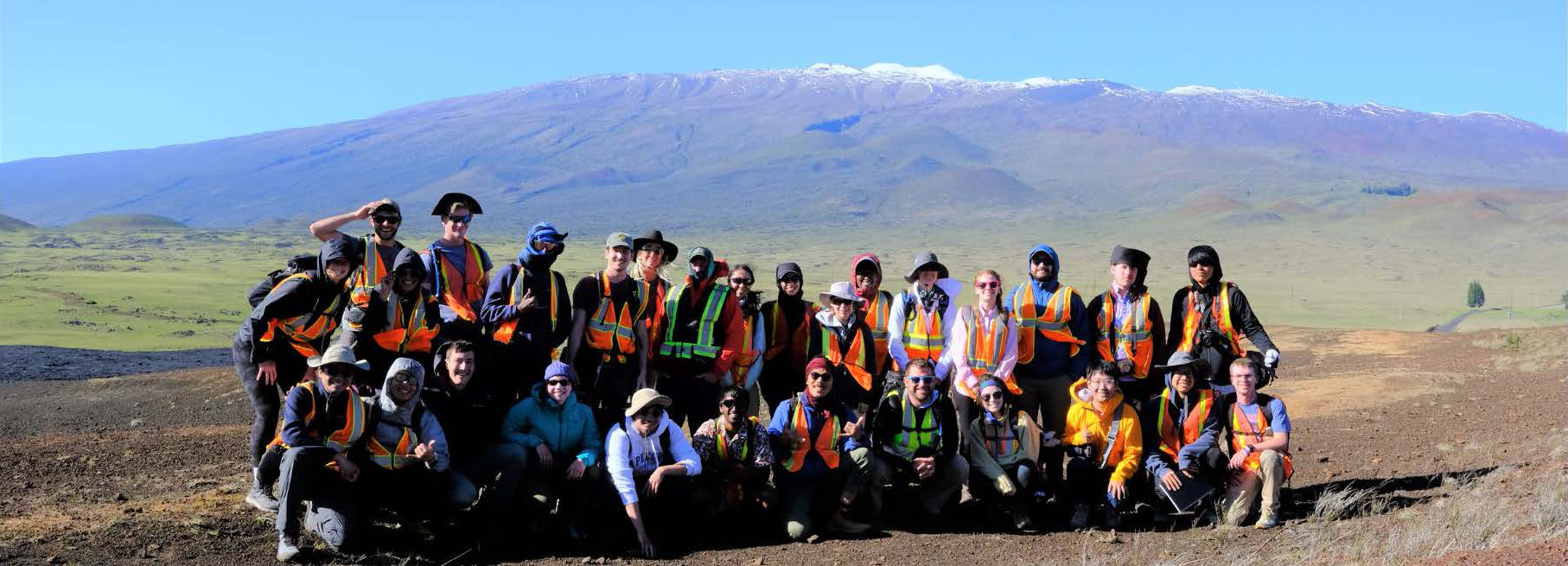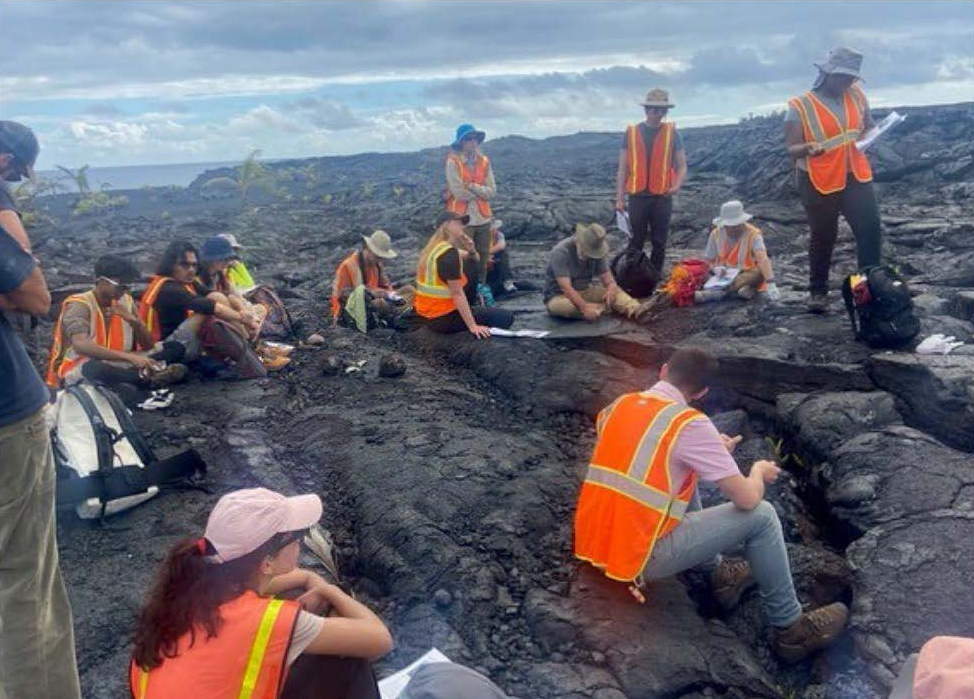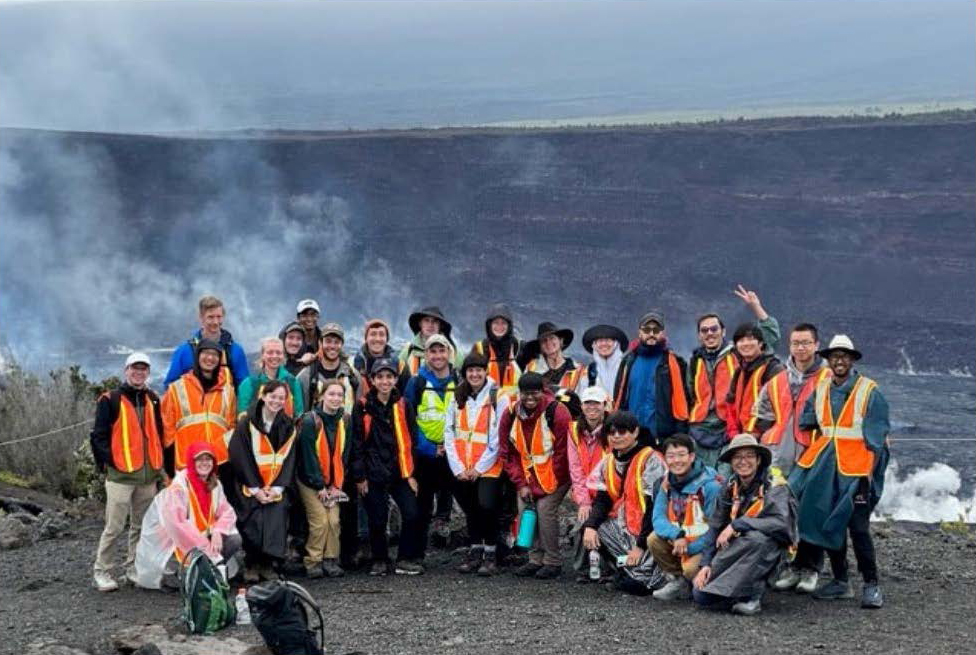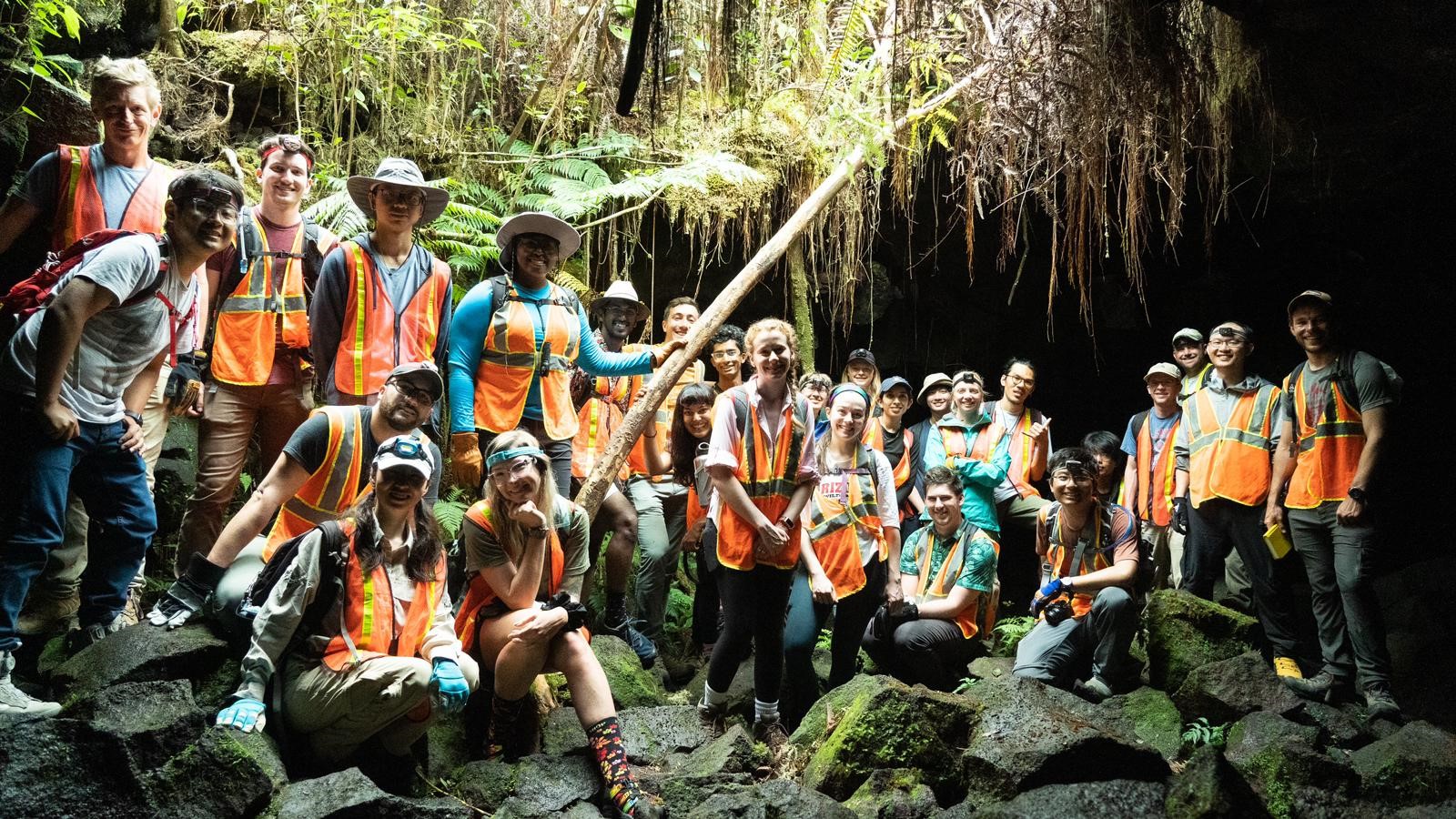Spring 2023: Destination Hawai'i

By Shane Byrne, Brett Carr, and Christopher Hamilton
Thanks to the generosity of donors and support from LPL, the PTYS 590 planetary geology field studies course was able to venture further and longer than usual this semester. Arizona and its surroundings is gifted with exceptionally diverse geology, but there are some processes, such as active volcanism and new lava flows, that are best seen elsewhere. This March, thirty of us packed our bags for the Big Island of Hawaiʻi to explore at some of the freshest lava flows in the world. Led by Professor Shane Byrne, we spent eleven geology-filled days on the trip and we needed every one of them! We were especially fortunate to have the expertise of Associate Professor Christopher Hamilton and Dr. Brett Carr, who have researched many of these field sites.
Our group stayed in Kona one night before departing for Volcano Village and our base of operations at the Holoholo In (yes, there’s only one ‘n’). Volcano village is ideally located and we had the entire hostel reserved for our group, so it made an excellent headquarters. Although Hawaiʻi is made up of several large shield volcanoes, we spent most of the trip on the nearby Kīlauea Volcano on the south side of the island and its rift zones. Much of the recent volcanic activity has been concentrated there in an area that is largely covered by Hawaiʻi Volcanoes National Park and off to the east.
The summit area of Kīlauea in the national park has many interesting sites. We started at the old site of the Hawaiian Volcano Observatory (now derelict) at the Uēkahuna Overlook, where we heard from a living legend of volcanology, Dr. Don Swanson. Our group had the opportunity to walk through the Kīlauea Iki caldera, which hosted a lava lake during an eruption in 1959. There’s still a lot of heat under the surface—fissures there continue to vent steam over 60 years after the eruption. The next day, we headed through the park to the coast, stopping at the devastation trail (devastated by tephra from the same 1959 Kīlauea Iki activity). We stopped at Maunaulu, a shield volcano that was built during an eruption in 1969–1974, and saw a perched lava pond on its flank. Our group got thoroughly drenched in the rain, but luckily that was the worst of the weather for the rest of the trip. We were able to dry out a little down on the coast looking at the Hōlei Sea Arch.
Occasionally, eruptions and lava flows wipe out neighborhoods in Hawaiʻi and that occurred near Pāhoa in 2018. Some enterprising landowners now provide tours of the area, giving us a chance to see a very young cone and lava field up close. We toured the Ahuʻailāʻau cone (Fissure 8 of the eruption), which is one of many eruption sites powered by activity many miles away at the Kīlauea caldera.
Lava–seawater interactions lead to spectacular explosions and we observed the results of those in several locations. Fine-grained debris from these explosions piles up in littoral cones that later can be eroded away by the waves. One of these cones near Southpoint is so rich in the mineral olivine that the sand on the adjoining beach is green. Other beaches we visited had the more common black sand (one of which came from the 2018 eruption above), which is basically the volcanic rock basalt that has been mechanically pounded into small pieces. Although it is not widespread on the Earth, this black sand has a special planetary connection as it’s quite similar to what we commonly see on Mars.
Hawaiʻi has a lot of other interesting sites to offer such as waterfalls, lava tubes, and incredible night-sky viewing. Fortunately, we were able to sample all these and more. The West Hawaii Astronomy Club met us with telescopes at the Mauna Kea visitors center one evening and wow’ed us with gorgeous views.
Hawaiʻi has a rich history that informs the modern culture. The many sites we visited provided an opportunity to learn about the history of Hawaiʻi. Footprints preserved in ash at Kaʻu desert attest to the long history of human habitation. Contact with Europeans began at Kealakekua Bay and set in motion a chain of contentious events that made Hawaii a U.S. state 180 years later. As planetary scientists, an issue of great relevance to us is telescope building on Mauna Kea. A complex dispute about how best to balance the science, economics, and sensitivity to Hawaiian customs and beliefs there continues to this day. A solution is elusive, but one can hope that education and understanding can lead to respect and ultimately agreement on a path forward.




